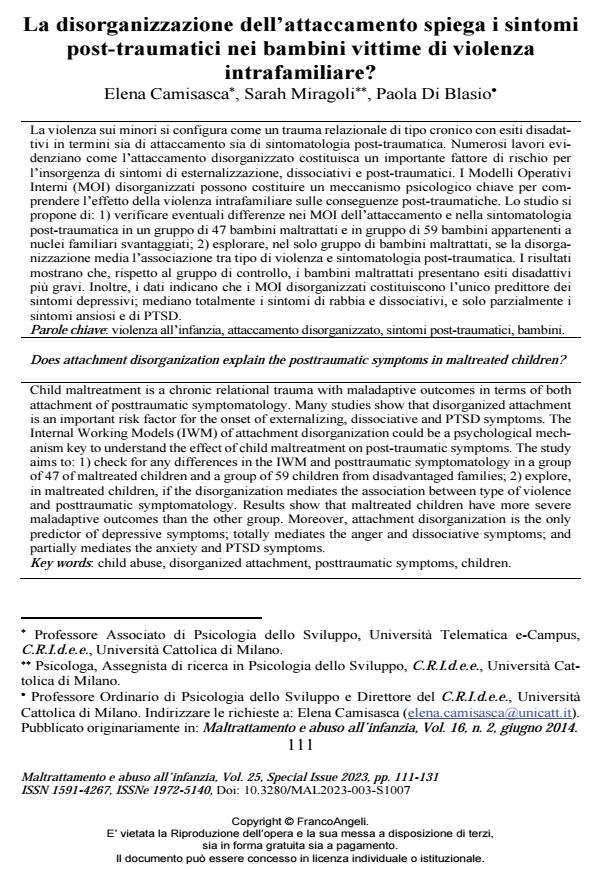Does attachment disorganization explain the posttraumatic symptoms in maltreated children?
Journal title MALTRATTAMENTO E ABUSO ALL’INFANZIA
Author/s Elena Camisasca, Sarah Miragoli, Paola Di Blasio
Publishing Year 2024 Issue 2023/3 Suppl.
Language Italian Pages 21 P. 111-131 File size 246 KB
DOI 10.3280/MAL2023-003-S1007
DOI is like a bar code for intellectual property: to have more infomation
click here
Below, you can see the article first page
If you want to buy this article in PDF format, you can do it, following the instructions to buy download credits

FrancoAngeli is member of Publishers International Linking Association, Inc (PILA), a not-for-profit association which run the CrossRef service enabling links to and from online scholarly content.
Child maltreatment is a chronic relational trauma with maladaptive outcomes in terms of both attachment of posttraumatic symptomatology. Many studies show that disorganized attachment is an important risk factor for the onset of externalizing, dissociative and PTSD symptoms. The Internal Working Models (IWM) of attachment disorganization could be a psychological mechanism key to understand the effect of child maltreatment on post-traumatic symptoms. The study aims to: 1) check for any differences in the IWM and post-traumatic symptomatology in a group of 47 of maltreated children and a group of 59 chil-dren from disadvantaged families; 2) explore, in maltreated children, if the disorganization mediates the association between type of violence and posttraumatic symptomatology. Re-sults show that maltreated children have more severe maladaptive outcomes than the other group. Moreover, attachment disorganization is the only predictor of depressive symptoms; totally mediates the anger and dissociative symptoms; and partially mediates the anxiety and PTSD symptoms.
Keywords: child abuse, disorganized attachment, posttraumatic symptoms, children.
Elena Camisasca, Sarah Miragoli, Paola Di Blasio, La disorganizzazione dell’attaccamento spiega i sintomi post-traumatici nei bambini vittime di violenza intrafamiliare? in "MALTRATTAMENTO E ABUSO ALL’INFANZIA" 3 Suppl./2023, pp 111-131, DOI: 10.3280/MAL2023-003-S1007